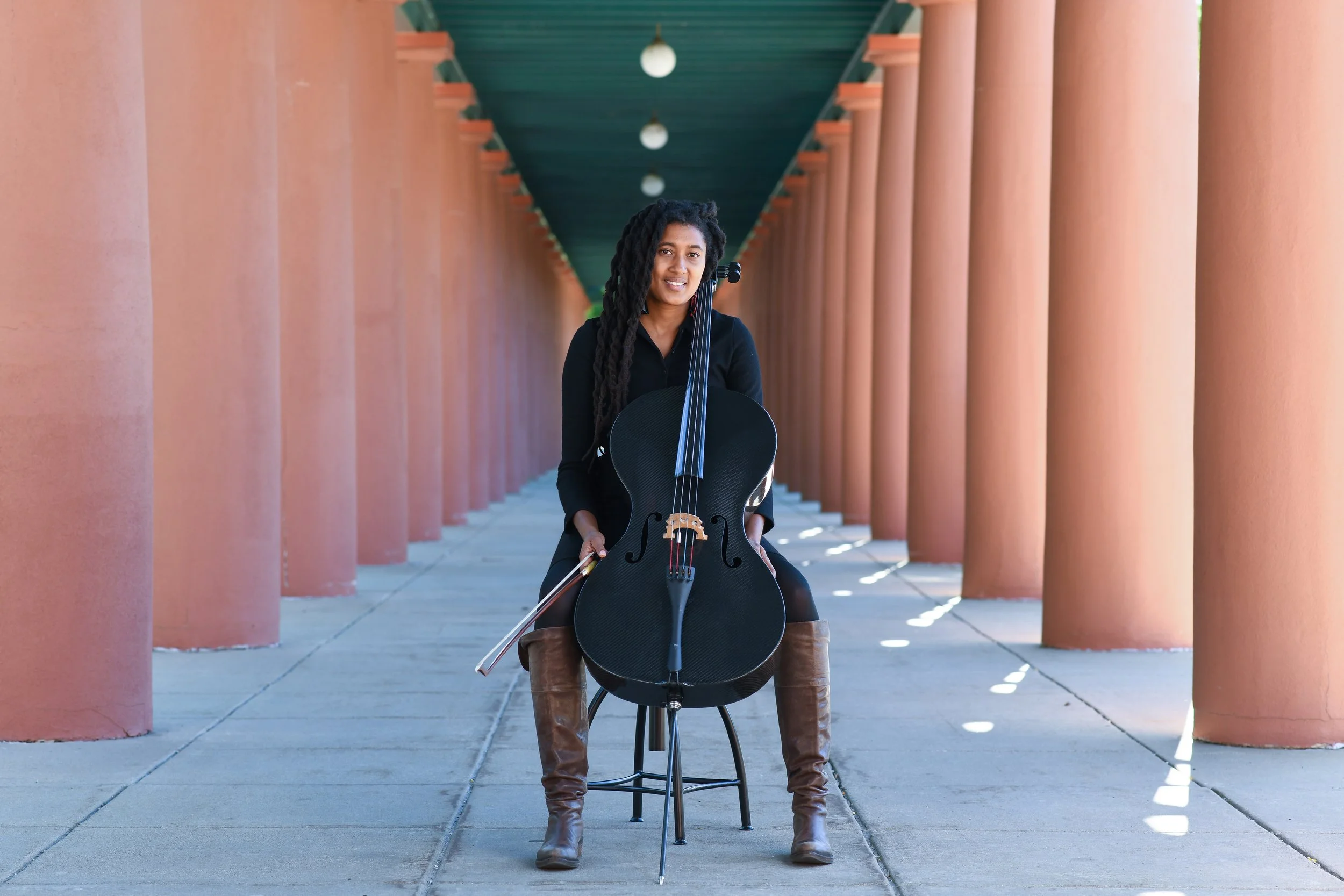Tomeka Reid’s Quartet Stretches and Saunters on 3 + 3
Tomeka Reid, recipient of a MacArthur Fellowship, in 2022. Photograph courtesy of the John D. and Catherine T. MacArthur Foundation
For the record, Tomeka Reid released two records as evidence that jazz could be played on the cello. Leading a quartet that includes bassist Jason Roebke, guitarist Mary Halvorson, and drummer Tomas Fujiwara, Reid created compositions for her quartet’s self-titled album in 2015 and its follow-up, Old New, four years later, in keys and character comfortable for her chosen voice.
For herself, her collaborators, and audiences worldwide, Reid has also played in ensembles alongside Nicole Mitchell, Craig Taborn, Mazz Swift, et al. Further, Reid’s gifts as founder of the Chicago Jazz String Summit have been acclaimed. This past May, the three-day event, now in its 10th year, featured cellists Dorothy Carlos, Janel Leppin, and other string-instrument savants at three Chicago venues. All these endeavors and more were noted by the MacArthur Foundation, who named Reid as a Fellow in 2022.
One year earlier, Reid received support from the Chamber Music Audience’s New Jazz Works Program. Then, as artist-in-residence at the Moers Festival in Germany, where she also lived for one year, Reid composed new music for her quartet. The Tomeka Reid Quartet then convened at a New Haven, Connecticut studio last August and performed these compositions for a new album released on April 26, titled 3 + 3. These performances, she explained, reveal a style not yet explored by her in the studio.
“This record is a departure for me. It’s more suite-like,” Reid said, one day before she and her quartet traveled to Japan for a six-gig sojourn. “I do lots of free improvisation (when playing live,) but I didn’t feel like I did that on my previous records. I wanted this one to feel like what we do on an actual gig.”
When discussing this different approach, Jason Roebke noted its impact.
“It’s really a powerful statement, because it’s not always what people want to hear from jazz artists,” he said. “We improv probably half the record, and the progression of Tomeka’s composing and conceptualizing of music here is really powerful.”
“Turning Inward,” the first “movement,” begins with cello, bass, and drums wandering through multiple sonic situations. It is immediately followed by “Sometimes You Just Have to Run with It.” This latter excursion, Reid said, “has a swing feel. I was like, ‘It’s gonna be what it’s gonna be. Sometimes you just have to let it go and let it be what it is!” This throwdown also infuses Halvorson’s tonal colors into the audio tapestry, before the quartet dives head-first into a mosh pit where only inhibitions get injured.
“Sauntering with Mr. Brown,” the middle selection, originated in Moers. There, Reid grew enamored with a park where she took long walks alone, contemplating a special person’s imminent arrival.
“I would think, ‘Man, I can’t wait until David (Brown) gets here. It’s hard being apart a lot,” said Reid, referring to the cool gent she married in 2020. “We enjoy taking long walks and not necessarily having a destination. That’s an important part of our relationship. The first time we traveled to Ethiopia, we walked, like, 60 miles in one week. We were just sauntering around the world!”
Propelled by Halvorson’s persistent riffs, “Sauntering with Mr. Brown” is elevated by electronic effects from Reid’s cello. Adding electronics into her playing, she said, has been an intriguing option that finally progressed from consideration to realization.
“I had resisted using electronics before, because I wanted to figure out how to get that sound acoustically, and Mary already embodies that space,” Reid said. “But I became more curious about using an octave pedal and delay pedal, and there’s always more exploration to go. I wanted to find my own personal way of using them within this context…and I felt like adding the delay would be cool.”
“Exploring Outward/Funambulist Fever” closes 3 + 3. When discussing what appeared in his imagination after hearing this title, David Brown, the album’s art designer, noted: “The tightrope walker has a little bit of a fever, so he’s vibrating, but the tightrope is steady.” The funambulist’s unsteadiness, he added, is also apparent by the multi-colored lines that comprise this visual on the CD’s back cover and inside panel.
Brown also incorporated images from painter Jacob Lawrence’s “Sidewalk Stories” into his creation. “On the CD,” he said, “you can look at both sides of (my painting) at the same time.” Reid also noted that she and Brown are painted on the album’s front cover, lower right corner.
For this closing “movement,” the cello, bass, and drums begin stretching and exploring inside and outside the moment. And then… “Once we bring in the first melodic idea, Mary solos over that,” Reid said. “She then goes along like she wants, and when she’s done, she (employs) her pedal, and we join her. Then we go to the next part of the tune.”
Reid’s gifts as a composer, improviser, and leader, Mary Halvorson observed, have blossomed in the decade the quartet has been together.
“The more we play, the more trust there is. And when you have a lot of trust, you can take more risks,” said Halvorson, who received a MacArthur Fellowship in 2019. “You can try different things and know that your bandmates will have your back.”
The rotating roles each member is assigned, Halvorson added, make the cello-guitar frontline an unpredictable and fulfilling ride.
“We can be part of the rhythm section, or one or both of us can have the melody, or one or both of us can be with the bass,” she said. “Tomeka’s really thinking about the full spectrum of each instrument and what each instrument can do.
“Tomeka is really a beautiful, caring person, and I think that’s reflected in her music,” Halvorson continued. “This book of music has so much time and openness, and the structures themselves are very inspiring.”





